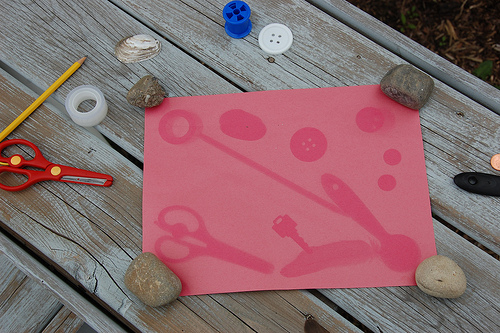About Preschoolers
Children 3 to 5 Years Old
What to Expect
Â
Between their third and fourth birthdays, children
Â
§ Start to play with other children, instead of next to them;
§ Are more likely to take turns and share and begin to understand that other people have feelings and rights;
§ Are increasingly self-reliant and probably can dress with little help;
§ May develop fears (“Mommy, there’s a monster under my bed.â€) and have imaginary companions;
§ Have greater large-muscle control than toddlers and love to run, skip, jump with both feet, catch a ball, climb downstairs and dance to music;
§ Have greater small-muscle control than toddlers, which is reflected in their drawings and scribbles;
§ Match and sort things that are alike and unalike;
§ Recognize numerals;
§ Like silly humor, riddles and practical jokes;
§ Understand and follow spoken directions;
§ Use new words and longer sentences;
§ Are aware of rhyming sounds in words;
§ May attempt to read, calling attention to themselves and showing pride in their accomplishment;
§ Recognize print around them on signs or in logos.
§ Know that each alphabet letter has a name and identify at least 10 alphabet letters, especially those in their own names; and
§ “Write,†or scribble messages.
Â
Between their fourth and fifth birthdays, children
Â
§ Are active and have lots of energy and may be aggressive in their play;
§ Enjoy more group activities, because they have longer attention spans;
§ Like making faces and being silly;
§ May form cliques with friends and may change friendships quickly;
§ Have better muscle control in running, jumping and hopping;
§ Recognize and write the numerals 1–10;
§ Recognize shapes such as circles, squares, rectangles and triangles;
§ Love to make rhymes, say nonsense words and tell jokes;
§ Know and use words that are important to school work, such as the names for colors, shapes and numbers; know and use words that are important to daily life, such as street names and addresses;
§ Know how books are held and read and follow print from left to right and from top to bottom of a page when listening to stories read aloud;
§ Recognize the shapes and names of all letters of the alphabet and know the sounds of some letters; and
§ Write some letters, particularly those in his own name.
Â
What Preschoolers Need
Â
3- to 4-year-old children require opportunities to
Â
§ Play with other children so they can learn to listen, take turns and share;
§ Develop more physical coordination—for example, by hopping on both feet;
§ Develop their growing language abilities through books, games, songs, science, math and art activities;
§ Develop more self-reliance skills—for example, learning to dress and undress themselves;
§ Count and measure;
§ Participate actively with adults in reading-aloud activities ;
§ Explore the alphabet and print; and
§ Attempt to write messages.
Â
4- to 5-year-old children need opportunities to
Â
§ Experiment and discover, within limits;
§ Develop their growing interest in school subjects, such as science, music, art and math;
§ Enjoy activities that involve exploring and investigating;
§ Group items that are similar (for example, by size, color or shape);
§ Use their imaginations and curiosity;
§ Develop their language skills by speaking and listening; and
§ See how reading and writing are both enjoyable and useful (for example, by listening to stories and poems, seeing adults use books to find information and dictating stories to adults).
Â
Getting Along
Â
Learning to get along with others is very important for children’s social development.
Â
Â
§ Give your child lots of personal attention and encouragement. Set aside time when you and your child can do enjoyable things together. Your positive feelings for your child will help him to feel good about himself.
§ Set a good example. Show your child what it means to get along with others and to be respectful. Let her hear you say “please†and “thank you†when you talk to others. Treat people in ways that show you care what happens to them.
§ Help your child find ways to solve conflicts with others. Help him to figure out what will happen if he shows his anger by hitting a playmate: “James, I know that Zoe took your truck without asking. But if you hit her and you have a big fight, then she will have to go home and the two of you won’t be able to play any more today. What’s another way that you can let Zoe know you want your truck back?â€
§ Make opportunities for your child to share and to care. Let her take charge of providing food for birds. When new families move into the neighborhood, let her help make cookies to welcome them.
§ Be physically affectionate. Children need hugs, kisses, an arm over the shoulder and a pat on the back.
§ Tell your child that you love him. Don’t assume that your loving actions will speak for themselves (although they are very important).
Â
Â
Learning to work with and get along with others contributes to children’s success in school.
Â
Â
Chores
Â
Any household task can become a good learning game—and can be fun.
Â
Jobs around the home that need to get done, such as:
Doing the laundry
Washing and drying dishes
Carrying out the garbage
Setting the dinner table
Dusting
Â
Â
§ Tell your child about the job you will do together. Explain why the family needs the job done. Describe how you will do it and how your child can help.
§ Teach your child new words that are associated with each job: “Let’s put the placemats on the table first, then the napkins.â€
§ Doing laundry together provides many opportunities for your child to learn. Ask him to help you remember all the clothes that need to be washed. See how many things he can name: socks, T-shirts, pajamas, sweater, shirt. Have him help you gather all the dirty clothes, then help you make piles of light and dark colors.
§ Show your child how to measure the soap and have him pour the soap into the machine. Let him put the items into the machine, naming each one. Keep out one sock. When the washer is filled with water, take out the mate to the sock. Let your child hold the wet sock and the one that you kept out. Ask him which one feels heavier and which one feels lighter. After the wash is done, have your child sort his own things into piles that are the same (for example, T-shirts, socks).
Â
Home chores can help children learn new words, how to listen and follow directions, how to count and how to sort. Chores can also help children improve their physical coordination and learn responsibility.
Â









